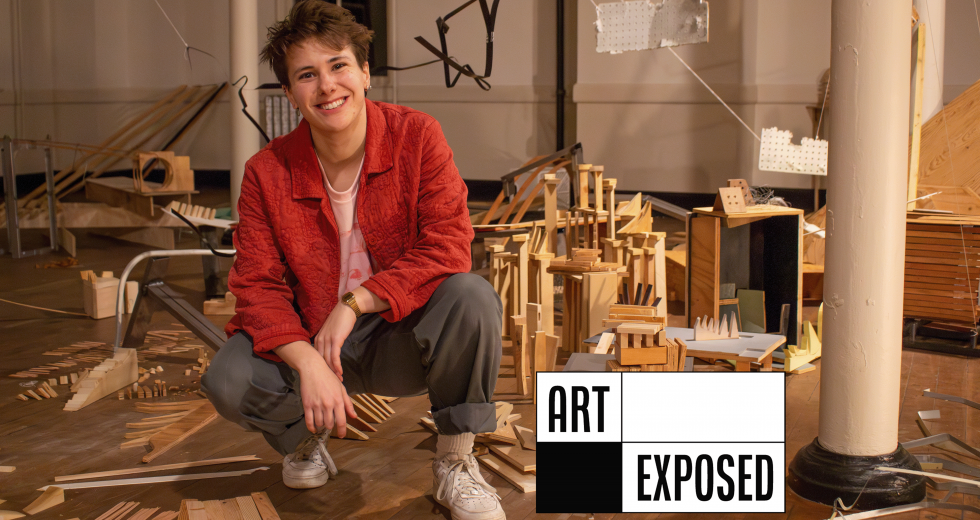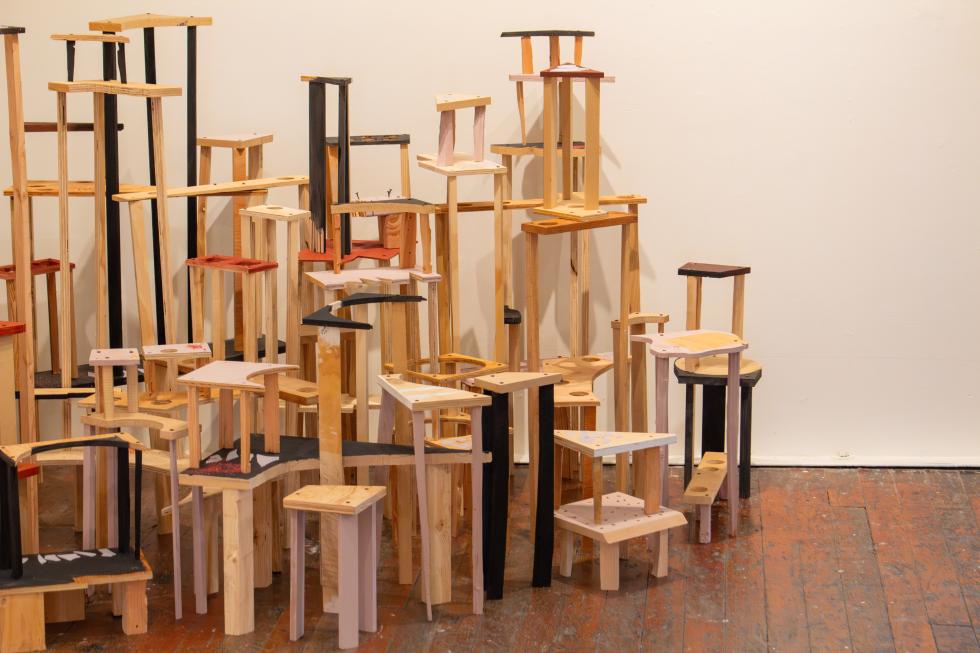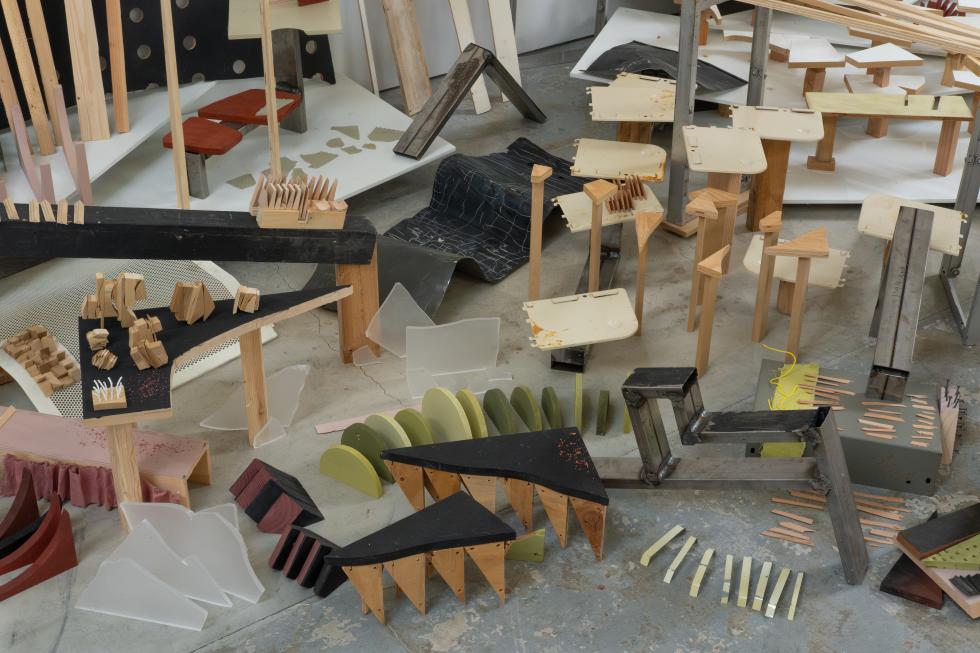A wooden garden appears to be growing inside Davis’ Third Space Art Collective at “Forming, Here, Again,” a solo exhibition by Luka Vergoz open until Nov. 3. Rising from the floor is a dense thicket of what might be the wild-germinated variant of IKEA footstools: tall, slender wooden legs of varying lengths supporting polygonal flat surfaces. In the corner, colorful blocks cluster like insects under the shade of vaguely palm-shaped wooden fronds. Every time a train passes — Third Space occupies a warehouse that lies flat against the tracks — it seems everything might topple over, but so far it hasn’t.
The organic, seemingly random shapes in Vergoz’ art are born out of his choice of materials: the scraps left behind on a woodshop floor. Vergoz began working with wood during his undergraduate degree at Vassar College in upstate New York, drawn to wooden structures’ relative permanence and ability to support the body. As he began to make larger sculptures, he found himself surrounded by his own offcuts.
“I couldn’t bring myself to throw them away,” he says. “They were such interesting shapes. They were the opposite of the shapes that I’d drawn, the shapes that I’d planned. They were the inverse, the negative space of my decisions. … And since they were smaller than the pieces I was making, they could be moved around in a way that felt immediate, like drawing. I would put extra paint on these scraps, and I could move them around and try out ideas in a quick way that isn’t always accessible to sculpture.”
After he arrived at UC Davis to begin his studio art MFA, Vergoz began to collect other scraps from the woodshop that were “the negative space of other people’s projects, not just my own,” he says. “It led me to this tendency to want to interrupt the material’s movement to the landfill. It just felt really bad to throw away material that felt so rich and felt so alive with meaning and history.”
A photo of Vergoz’ studio towards the end of his time at UC Davis
in spring 2023.
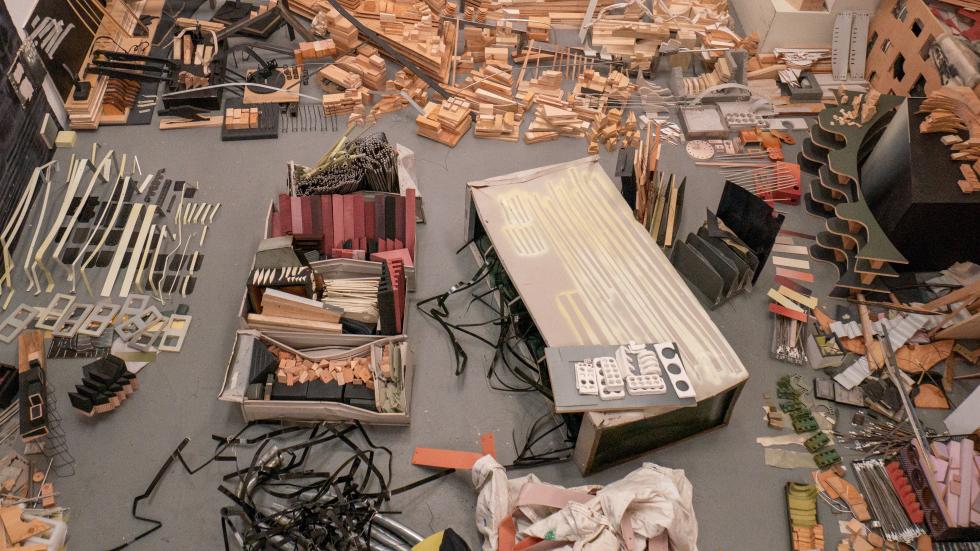
In addition to providing new material, UC Davis showed Vergoz “how important it was to be in a community of artists,” he says. “To work and be around other artists leads to so much creative momentum and feels so much better than making work in isolation.” After graduating in 2023, he had a year-long fellowship at the Headlands Center for the Arts in Marin County, a selective residency program that offers free studio space in former army barracks on National Parks Service land.
The Third Space show, co-presented by DART magazine, represented a kind of Davis homecoming for Vergoz, who now lives in the East Bay. Curator Yuchen Hou connected this homecoming to Vergoz’ choice of materials: “If places once left behind and past experiences are themselves discarded materials, what new forms can emerge when we gather and reshape them?”
What are some of the themes you’d like to express in this exhibition, and how do you achieve this?
One of the big themes of my work in the exhibition comes from the laws of conservation of mass and energy — that matter cannot be created or destroyed. Following that logic, could all transformations qualify as rearrangements?
This is something I’ve thought about in artmaking as well where even mark making, even dying something, even taking a photograph is a kind of rearranging. And shifting scales allows you to see that — you’re putting pigment somewhere, you’re allowing a chemical process to unfold where matter changes places and chemical reactions take place, shifting atoms and energy and subatomic particles. If you shift scale enough, whether that’s zooming in or zooming out, everything is just rearranging and all rearrangements are kinds of events. So that these categories that we think of as static, these elements, these nouns, actually have actions and events that support and maintain their form.
Vergoz’ sculpture “Counter Cartographies” was part of a show at
the Institute of Contemporary Art in San Francisco alongside work
by other Headlands graduate fellows.
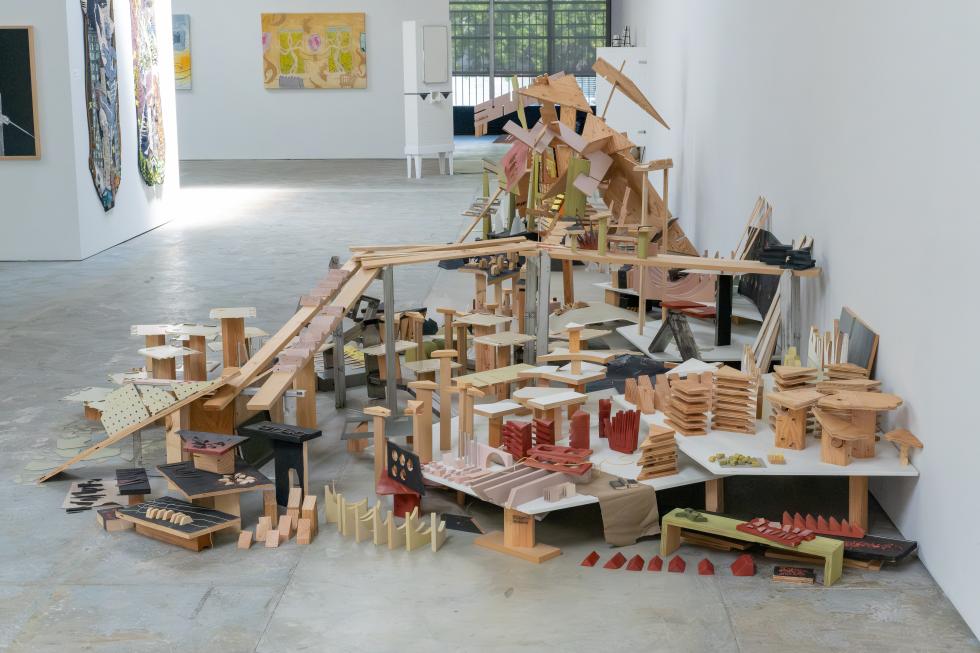
And that connects to the theme of transformation as well. That all things continue to change and were something else before they are what you see them as now. And just this awareness of this transformation, that matter continues to change, to decay, to rearrange, to break apart, and to shuffle despite any efforts that might try to slow or stop this process. Especially in art-making where there’s this need to preserve, to maintain something’s value. And I’m really interested in objects resisting that. And so in my own practice, letting works exist in this state of fluidity where they can change and where objects and elements aren’t necessarily fixed, and to show these processes and transformations is really important to me.
There’s this resistance to change and this hesitancy to recognize and allow transformation in so many areas of understanding right now. I feel like it’s important to show matter in its stages of transformation, to show things in various stages of becoming, especially as someone who’s transgender. I’ve experienced being as a process — as we all have — but in a very particular way where you’re transforming further in a direction and in an order that may not be recognized as normative. To me, showing matter that continues to change, showing being as a process rather than as a single static state is really important. Recognizing the impossibility of things staying still and staying the same is present in this work.
In the exhibition, I show the stages my work goes through. It starts in the installation work, where I gather these materials, I collect them, I paint them. They’re these ingredients that I prepare. And when I get to a site to install, they come to life. I build a landscape of these ingredients. I react to the space and arrange them in a way that creates this kind of environment.
“Unbecoming Reprise” at ICA SF.
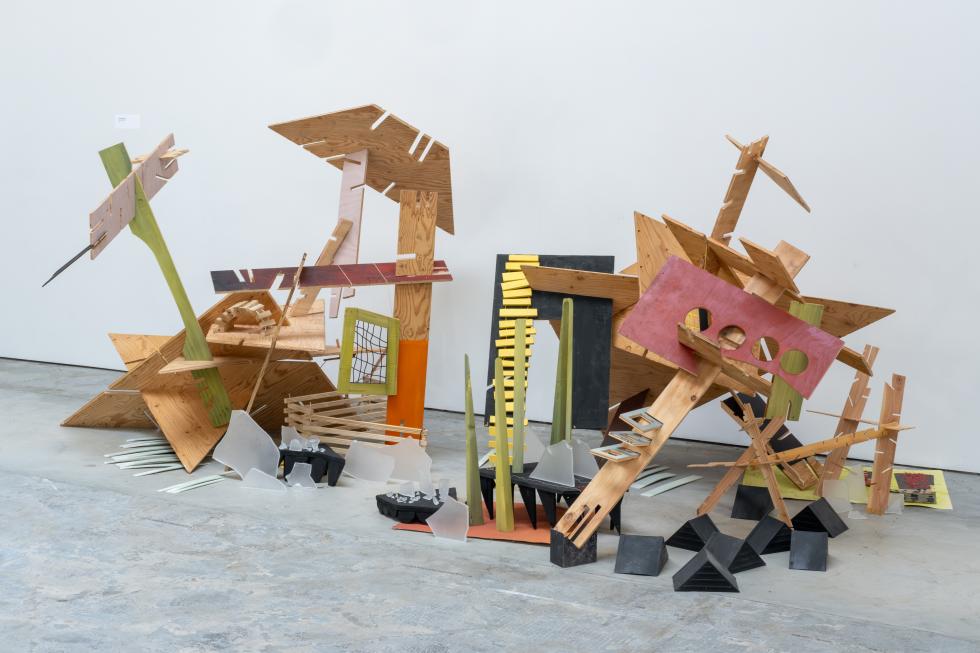
Sculpture is often so focused on object-making, and there’s even this dynamic in painting where you have the foreground, you have the background. You have the object and you have the environment. And there are real decisions being made and often unseen editing at play with what counts as the object, what counts as the environment. What configuration and state is matter in that it counts as the subject? And what ends up fading to the background and counting as where something is rather than what something is? And where the boundary of an object starts to get slippery. To me, making an environment is really important to me in the installation work because it talks about this, and it can put the viewer somewhere.
After the installation work, elements start to fuse together. As things get more connected and get more static, they get less slippery, easier to define, and they go up onto the wall. This limiting of the potentiality of each component feels like an acting-out of a conventional art making practice. Where you’re honing in, connecting things, fixing things to certain places, hanging something up, until it arrives at a location as kind of a product. And the product can be playful. It can be subversive, but it’s come to this place of rest, where it doesn’t change anymore. The wall works end up being this stopping point, this moment of pause or punctuation on the wall.
You also create sound art. How does this medium relate to your visual art?
I collect snippets of sound from the world that I’ve recorded or from instruments that I either have — like a synthesizer —or made —like xylophones made out of scrap wood. String instruments that I’ve made out of scraps of things and fishing wire. Dropping metal pieces and recording them. I collect scraps of sound just like I collect scraps of physical material. And these sonic compositions involve a rearranging of these scraps. So I have this scrap library in both sound and material form, and composition is a collaging of these sounds atop sounds. Sustained sounds under more percussive sounds. Just like I have larger pieces of wood with lots of little pieces on top in installation form, that phenomenon happens in sound as well.
I think the processes of making echo each other and also complement each other where sometimes I’ll bring the sound into the installation to add another dimension to bring time into the equation. In my thesis work, shown at the Manetti Shrem Museum of Art at UC Davis, there was a work in the corner that had a three-channel sound installation as one of the components of the piece. So sometimes they’ll come together and coexist in the same space, which is exciting to me because I think the sound helps echo some of the themes I think about while arranging and adds further awareness of time passing.
Works like “Wrapped Up” (foreground), “Fixed Up” (background) and
“Hung Up” (on wall) use scrap materials and abstract shapes.
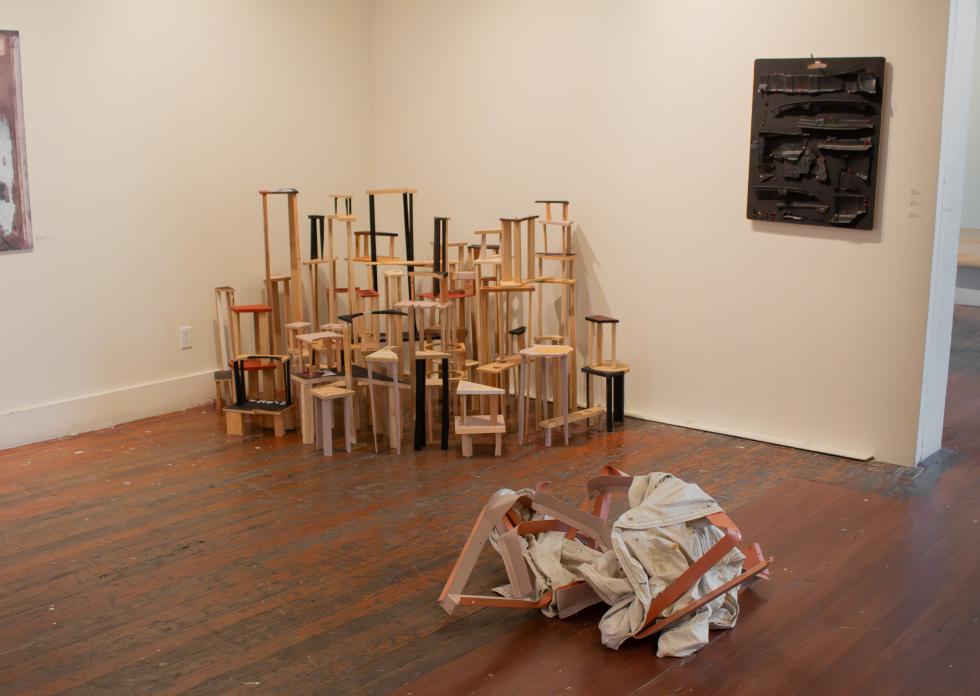
Tell me about your life before you came to Davis. Where did you grow up, and how did you get interested in art?
I grew up in a few different states, but lived in Indianapolis from the time I was around 10 through the end of high school.
I guess I was always interested in art in the way that most kids like to make art, and I never really let it go. So maybe as that tendency fell away from some people, it became more noticeable in me in middle school and in high school. And as I went into undergrad at Vassar College in upstate New York, I planned potentially to major in art, but I had interest in a lot of different subjects as well, which is why I went to a school where I could take classes in many fields of study. I originally declared cognitive science as a major — I was really interested in the philosophy behind that subject. And physics, too, I originally went into college thinking I was going to major in physics. I loved math; I loved physics in high school. It was just this language about how the world was functioning around me that really spoke to me. But as I continued taking classes in undergrad, art was the subject I most connected with and this presence that stayed with me. Declaring art and committing seriously to art as my main focus felt right.
“Itchy Diptych” is one of the wall-hung works included at the
“Forming, Here, Again” show.
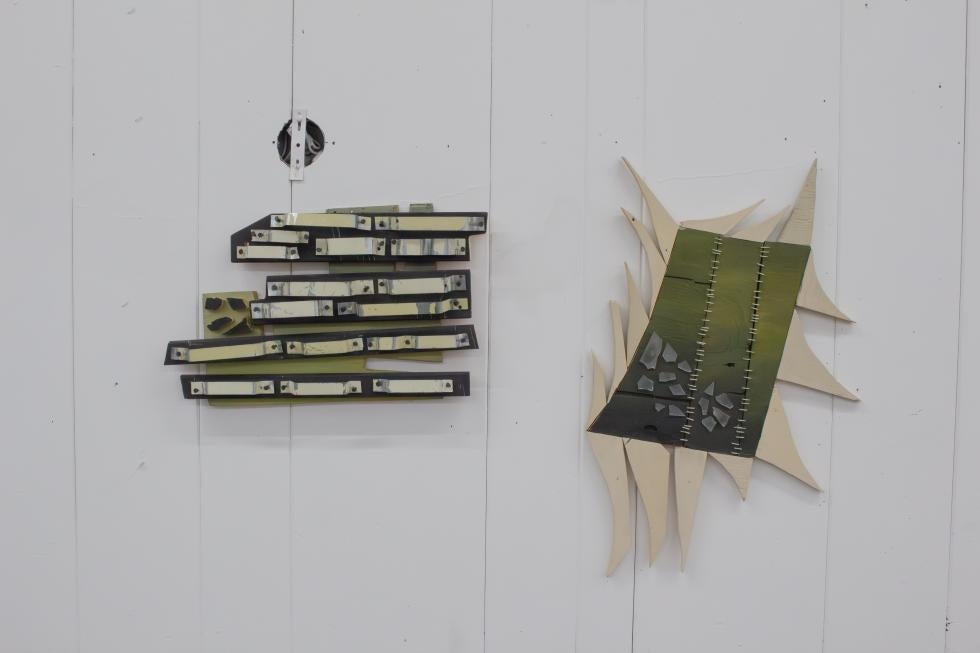
And one thing I like about art is that artists are interested in ideas outside the realm of art. Many artists I know have these research practices in different fields. … So the ideas that I’d been interested in the whole time–physics, cognitive science and philosophy, interests in language and analysis all go into my art. They all go into these ideas and these ways of approaching the world and working with materials, where they still inform the work I make today.
How would you describe the Davis and Sacramento art scene, as you experienced it, compared to other places you’ve lived?
The scene seems tight-knit, which is nice to see. And there seems to be a scrappiness — or an appreciation for scrappiness — that I also identify with. And that’s something I saw a little bit in the Indianapolis art scene while I was there, although I wasn’t a practicing artist for too long there. I was just in Indianapolis for two years after undergrad, and the latter part of that was during the first part of the pandemic. But I think there are some similarities in the Sacramento/Davis area with the Indianapolis art scene in valuing the DIY approach and making events and shows happen. And there’s a kind of spaciousness and making-stuff-happen mentality that can be hard to find in some more crowded places. So I really appreciate this space to grow and this space to show work and to make things happen.
What are some of the challenges of living as a working artist?
I would say: time, space, and energy. Maybe not necessarily in that order; it depends on the conditions. For me those are the big challenges. Having the space to work and to store work, especially as a sculptor, is a huge challenge. It’s something I was really fortunate to have at the Headlands, and there’s a small garage space behind the apartment I rent with my partner that’s become a kind of studio recently. But as a sculptor, you need lots of space, especially as an installation artist. So that’s something I’ve been really challenged by and continue to try to find solutions to be able to make larger scale work.
Finding the time as someone who works — and the energy after working to make work — is also quite a challenge. One thing that I’ve found helps with that challenge in particular is having friends who are artists making work as well. My partner Gracianne Kirsh is also an artist, who I met while at the Davis MFA program. Living with an artist who’s also very serious about their practice is nice because we live with this awareness of and importance given to our own and each other’s artmaking practice.
Plank Walk” and “All a Board,” 2024.
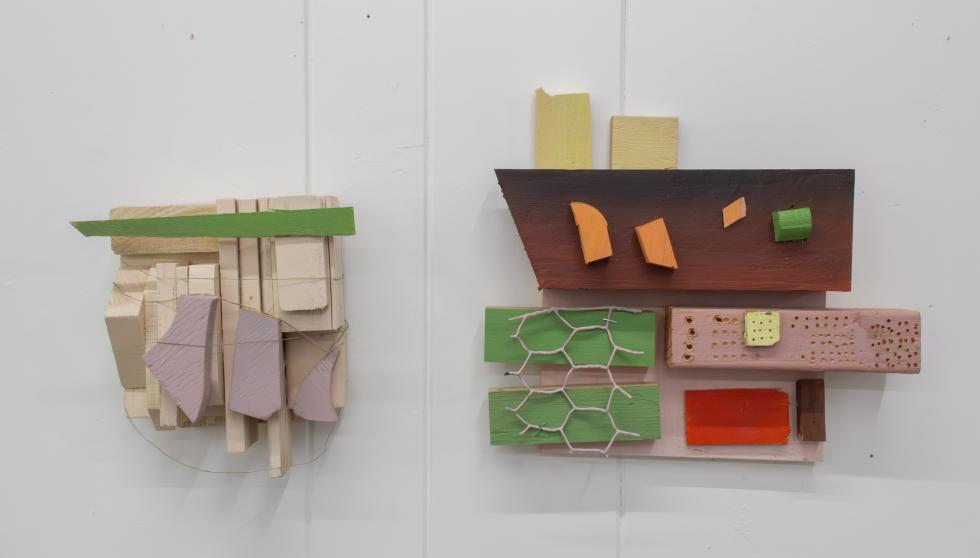
What advice would you give to art students getting ready to start their post-university careers?
That’s a good question. I guess, I would say everyone — this might seem kind of general, but — everyone has their own path. If you come out of school with a momentum of making or a momentum of opportunities, definitely ride that wave as long and take as much advantage of that as you can. …
If the opportunities aren’t presenting themselves to you as readily, or if you are making work more slowly or have a job that limits your time and energy, just know that so many artists are out there right now living their lives and making work at the pace that they can, and they go on to have opportunities to show their work and spread their ideas. And that this rest time, or seemingly inactive times, where maybe you’re not making as much work as you like, or maybe you don’t have many or any opportunities to show your work: This is all time that you’re living in the world and processing what’s around you. You’re formulating thoughts and developing who you are. …
Whatever route your post-university career takes, keep going, and you’ll find your own way of being as an artist. Keep going. Keep making, even if it’s the smallest thing. Even if you don’t have much room. Even if it doesn’t feel like something that will be valued at the time, just keep making things and see what happens. Keep this curiosity, and see where it takes you.
This Q&A has been edited for length and clarity.
–
Stay up to date on art and culture in the Capital Region: Follow @comstocksmag on Instagram!
Recommended For You
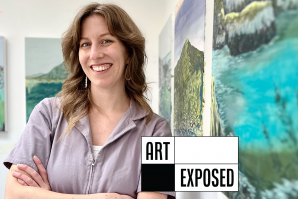
Art Exposed: Jennifer Peart
Meet the Sacramento artist painting portals to a sustainable future
Addressing themes of reciprocity and stewardship, Jennifer Peart’s artwork draws inspiration from science fiction novels, retrofuturistic architecture and pristine natural landscapes. Her intricate, vivid landscapes, often featuring familiar landmarks, are delicately painted on sustainably sourced wood panels.
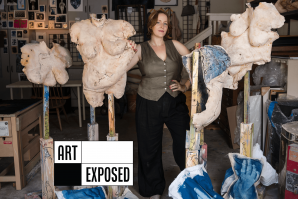
Art Exposed: Katharine T. Jacobs
This rural artist uses her own body to process trauma and chronic illness
Processing emotional trauma and her disease through her work, Katharine T. Jacobs creates analog photographs, sculptures and intermedia works that address her identity as a mother, survivor of domestic abuse and a woman with a chronic illness.
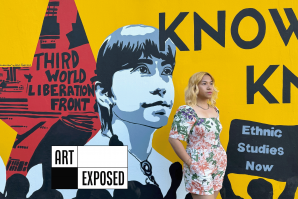
Art Exposed: Julie Bernadeth Crumb
Weaving cultural memory and communal care into artistic practice
Whether creating elaborate jewelry inspired by pre-colonial harvest rituals, collaging woodcut prints into an altar homage to her Filipino homeland or sculpting clay into aquatic life forms for an underwater installation, award-winning multidisciplinary artist Julie Bernadeth Crumb uses her hands to forge materials into meditations on culture, identity and Indigeneity.
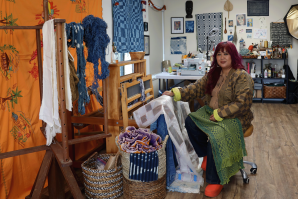
How Sacramento Creatives Are Redefining the Arts Economy
Local artists are reclaiming control over how cultural work is valued and funded
Across the country, arts funding models are shifting. Where once large institutions absorbed the majority of public and philanthropic support, new approaches are emphasizing direct investment in artists themselves.



